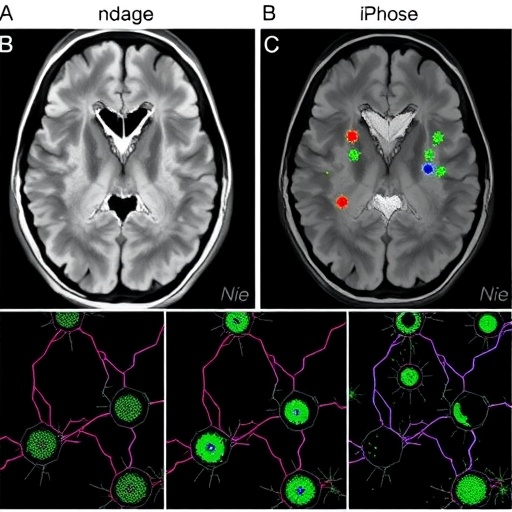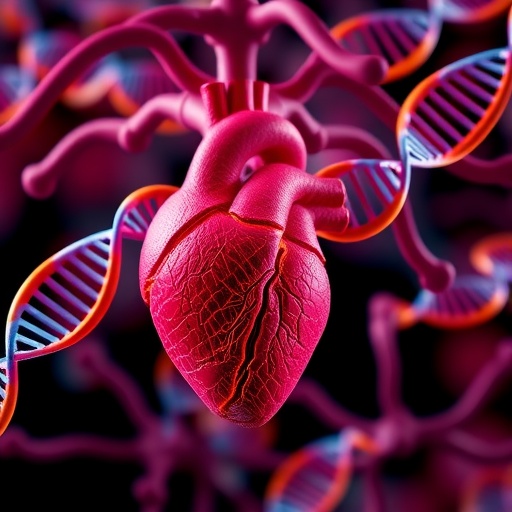A groundbreaking study led by the University of Bristol has revealed a novel and effective method to significantly reduce both the carbon footprint and saturated fat consumption associated with hospital food choices. By strategically reorganizing weekly menus—without altering the offered dishes—patients are subtly nudged toward selecting greener, healthier meals. This clever approach hinges on optimizing the position of dishes within the menu to cultivate a form of “healthy competition,” thereby enhancing the appeal of sustainable options without overtly restricting patient choice.
The research, published in a special issue of Philosophical Transactions of the Royal Society B, delves into innovative strategies designed to transform the UK’s food systems toward greater health, equity, and sustainability. The study’s distinctive contribution lies in its focus on behaviorally informed menu design, an intervention that leverages subtle improvements in choice architecture rather than explicit elimination or substitution of popular food items. This design philosophy offers a pragmatic and scalable solution with the potential to benefit not only patient health but also the environment.
Central to the study’s methodology was the concept of reshuffling the weekly menu to avoid “unhealthy competition.” Typically, highly favored but less healthy dishes such as meat-laden lasagne directly compete with healthier alternatives like lentil curry. Such juxtaposition tends to overshadow the healthier options, reducing their selection frequency. By tactically reordering dishes so that healthier meals face less popular competitors on different days, the researchers effectively increased the probability of their selection within hospital canteens.
Prior experiments conducted in university settings had already demonstrated the success of this approach, but this latest study extends those findings to the hospital inpatient context, a critical environment given the dietary challenges faced by patients. The researchers modeled patient preferences across 12 NHS hospitals in the UK, utilizing survey data from 50 individuals within each hospital catchment area who rated their preferences for 15 distinct weekly dishes. With this preference data, menus were optimized to maximize the uptake of healthier and more environmentally sustainable options without removing any meals from the menu.
Dr. Annika Flynn, the lead author and Senior Research Associate at the University of Bristol, emphasized the subtleties underpinning their intervention: by merely changing the order of dish presentation, the menu creates a competitive milieu favoring healthier options. This subtle shift avoids the pitfalls of overt restriction or coercion, which can often provoke resistance or reduced satisfaction. The results of the modeling predicted impressive impacts, with potential reductions in carbon emissions ranging from 9.1% to 29.3%, alongside a significant decrease in saturated fat intake between 5.0% and 26.5% across most hospital menus.
The implications of these findings are multifaceted, particularly as hospital food has long been scrutinized for its nutritional quality and environmental impact. Hospitals represent a microcosm of larger societal eating patterns, and interventions in this setting can reverberate widely. Introducing such low-cost, behaviorally informed menu optimizations could serve as a pioneering model for other institutional food procurement contexts, including schools and care homes, where dietary shifts could meaningfully enhance public health and sustainability at scale.
One of the critical challenges in implementing dietary interventions lies in human behavior and acceptance—people notoriously resist change, especially when unwell. As Professor Jeff Brunstrom, a co-author and expert in experimental psychology, noted, this “sneaky” technique presents an appealing opportunity to encourage healthier, greener choices unobtrusively, minimizing disruption to patient experience while maximizing outcomes. The researchers’ success in modeling preferences suggests that scalability and adaptability to diverse institutional contexts are well within reach.
The researchers framed their approach within the broader SNEAK project—Sustainable Nutrition, Environment, and Agriculture, without Consumer Knowledge—an initiative supported by UK Research and Innovation’s Transforming UK Food Systems program. The project aims to craft innovative propositions that promote sustainable health improvements without relying on consumers to actively adopt new knowledge or behavior, sidestepping the common barriers to dietary change.
Moreover, the study resonates with ongoing debates about how public institutions can reconcile health, environmental stewardship, and consumer choice. By demonstrating that intelligent menu engineering can achieve significant carbon and health benefits without reducing menu variety or imposing dietary constraints, this research advances a compelling case for policy adoption. Hospital administrators and policymakers have a roadmap for implementing cost-effective, evidence-based menu reforms capable of delivering measurable benefits.
The environmental dimension of hospital food often receives less attention than its nutritional content, yet food systems contribute substantially to global greenhouse gas emissions. The study’s findings—particularly the possibility of nearly a 30% reduction in carbon footprint related to meal choices—spotlight the vital importance of integrating sustainability into institutional food procurement. The reduction in saturated fat intake further aligns with public health goals to combat cardiovascular diseases, adding tangible health co-benefits.
Professor Guy Poppy, Pro Vice-Chancellor at the University of Bristol and director of the supporting Transforming UK Food Systems program, underscored the broader significance: food is intricately tied to health, environment, and economy. Interventions like the dish swap formula not only target health and environmental outcomes but also have the potential to influence economic factors through efficient food provisioning and waste reduction. Such holistic benefits strengthen the argument for institutional adoption of strategic menu optimization practices.
Looking ahead, the widespread application of this menu redesign technique could reshape institutional food culture across the UK and beyond. With UK census data indicating that over 40% of workers regularly use canteen services, and millions of young individuals consume meals in schools and universities, the potential impact of subtle environmental and health nudges embedded in menu design is extraordinary. Large-scale adoption could catalyze a cultural shift in eating habits, reinforcing sustainable consumption patterns from a young age.
In sum, this pioneering research not only provides proof of concept for a simple, non-intrusive method to align hospital catering with sustainability and health goals but also charts a path forward for expanding such interventions across multiple public settings. By redefining menu competition rather than limiting choice, the strategy exemplifies how behavioral insights can be harnessed to foster profound societal change in nutrition and environmental impact—quietly, deftly, and with remarkable promise.
Subject of Research:
Reduction of carbon emissions and saturated fat consumption through strategic menu optimization in UK hospital inpatient meals.
Article Title:
Strategic menu optimisation could reduce carbon emissions and saturated fat consumption: A simulation modelling study of UK hospital inpatient meals
News Publication Date:
18-Sep-2025
Web References:
http://dx.doi.org/10.1098/rstb2024.0512
Image Credits:
University of Bristol
Keywords:
Human health, sustainable nutrition, behavioral intervention, hospital food, carbon footprint reduction, saturated fat intake, menu optimization, public health, institutional food procurement
Tags: behaviorally informed menu designequitable access to healthy foodshealthy competition in hospital menusimpact of menu design on dietary choicesinnovative approaches to hospital nutritionnudging patients toward healthier mealsoptimizing menu layout for healthpatient-centered food selection strategiespromoting lower-fat meal optionsreducing carbon footprint in food systemssustainable hospital food choicestransforming UK food systems for sustainability





